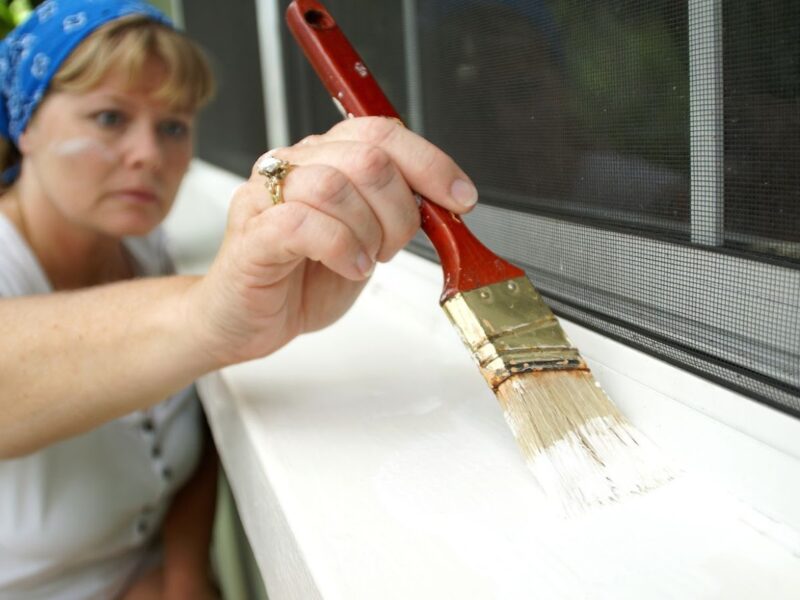Use a high-quality paintbrush or roller specifically designed for use with latex paint. Look for a “low-shedding” variety to help minimize the amount of bristles that come off while you’re painting. Choose a synthetic brush over one made with natural fibers for the best results.
Start by painting the trim near the ceiling first, then work your way down. Use long, even strokes and don’t be afraid to overlap each section slightly as you go.
If you do end up with brushstrokes in the paint, don’t panic! Simply wait for the trim to dry completely, then sand it lightly with fine-grit sandpaper until the brushstrokes are no longer visible. Repaint the trim as necessary.
How to paint without brush marks
Requires a little patience and practice to perfect, but it’s definitely possible with the right tools and techniques. With a little bit of effort, you can achieve professional-looking results that’ll make your home look its best.
Use a high-quality paintbrush or roller specifically designed for use with latex paint. Look for a “low-shedding” variety to help minimize the amount of bristles that come off while you’re painting. Choose a synthetic brush over one made with natural fibers for the best results.
Start by painting the trim near the ceiling first, then work your way down. Use long, even strokes and don’t be afraid to overlap each section slightly as you go.If you do end up with brushstrokes in the paint, don’t panic! Simply wait for the trim to dry completely, then sand it lightly with fine-grit sandpaper until the brushstrokes are no longer visible. Repaint the trim as necessary.
Choose the right type of paintbrush
When it comes to choosing the right type of paintbrush, there are a few things you need to take into account. The first is the type of paint you will be using – acrylic, oil or watercolor? The next is the substrate you will be painting on – canvas, wood or paper? Once you have determined those two factors, it becomes much easier to choose the right brush for the job. In this blog post, we will explore each type of paintbrush and give you a few tips on how to select the best one for your needs.
Choosing the right type of paintbrush is important when painting. Knowing which brush to use for each type of paint will help you get the results you want. There are a variety of brushes available, so it’s important to understand the differences so you can make the best choice for your project.
Tape off the trim
To avoid getting paint on the walls or other surfaces, it’s important to tape off the trim before you start painting. You can use painter’s tape or any other type of masking tape that’s wide enough to cover the area you’re working on.When taping off the trim, be sure to press the tape down firmly so that there’s a good seal. Otherwise, paint may seep under the tape and ruin your clean lines.
Use painter’s tape to tape off the trim before you start painting. This will help you avoid getting paint on the walls or other surfaces.Press the tape down firmly to create a good seal. Otherwise, paint may seep under the tape and ruin your clean lines.
Paint in short, even strokes
Once you’ve taped off the trim, it’s time to start painting. Use short, even strokes and don’t forget to overlap each section slightly as you go.It’s also important to paint the trim near the ceiling first, then work your way down. This will help you avoid getting paint on the walls or other surfaces.
If you do end up with brushstrokes in the paint, don’t panic! Simply wait for the trim to dry completely, then sand it lightly with fine-grit sandpaper until the brushstrokes are no longer visible. Repaint the trim as necessary.
Remove the tape while the paint is still wet
Once you’ve finished painting, carefully remove the tape while the paint is still wet. This will help prevent any peeling or flaking that can occur when the paint dries.If you find that the paint has already dried, you can use a utility knife to carefully score the edge of the tape, then pull it off.
Be sure to remove the tape while the paint is still wet. This will help prevent any peeling or flaking that can occur when the paint dries.If the paint has already dried, you can use a utility knife to score the edge of the tape, then pull it off.











